Wildflower Wonderlands
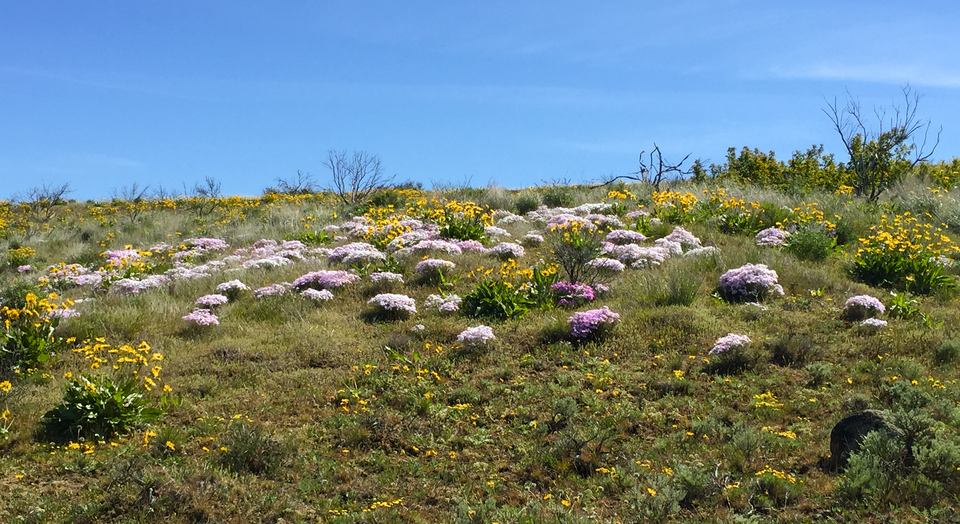
In the spring rain
all things grow more beautiful.
—Chiyo-Ni, 18th century, Japan
Come join me from afar as I explore and document the spring wildflower display that spreads out every year across the diverse shrub steppe landscape near my loft in the small town of Tieton, Washington. As the Art Nun, I make it my practice to walk these lands in all seasons, but spring always brings an especially dramatic and welcome presence after the long, cold winter.
When the last remnants of snow disappear and the spring rains arrive, the landscape east of the Cascade mountains starts to clothe its bare hills and mountains with the new soft fuzz of short green grass. And with the help of more than 200 days of sun per year here in Central Washington, the dormant wildflower buds gather strength for their annual show, which usually arrives in early April.
This morning
The snow turned to rain,
The fault of nearing spring.
—Sampū, 18th century, Japan
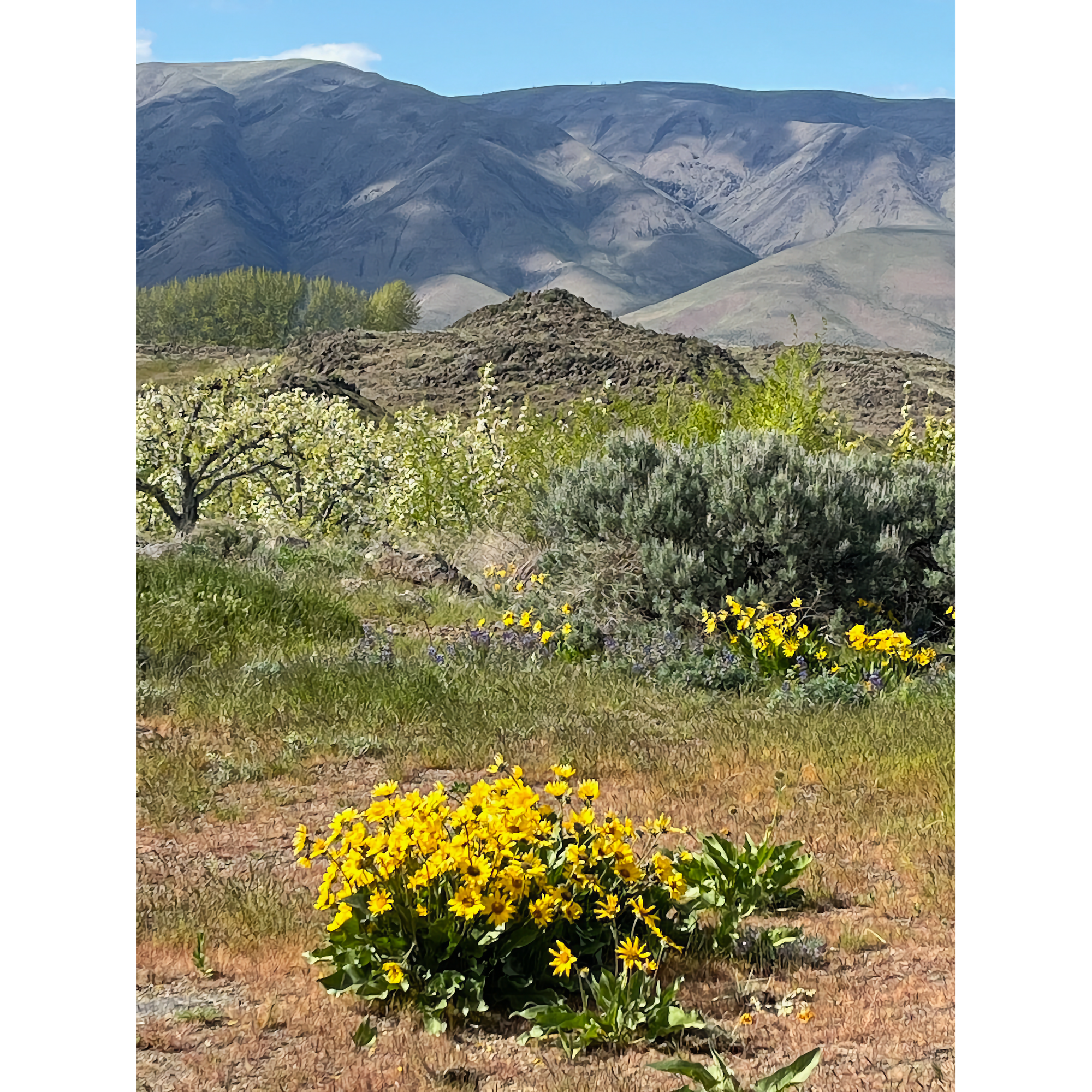
During my springtime wanderings among these natural wonders, I never forget how fortunate I am to be in physical contact with the spirit of the hills, buttes, plants, sounds of rushing rivers and streams, birdsong, cleansing winds, the fragrance of flowering trees, and the intense low hum of thousands of tiny bees. The annual return of this comforting, collective presence restores my soul. The artwork, photos, and poetry included in this post are meant to illuminate the spectacular wild beauty of this world.
For most of these illustrations, I’ve been influenced by the artistic and philosophical views I received from my self-directed studies of Asian art, combined with readings of haiku—the spare, enigmatic Japanese poetic form that extends far beneath “surface” reality to suddenly arrive at the center of any experience. Haiku’s abstract brevity creates a subliminal opening into the reader’s mind that allows the fullness of life to reverberate in every moment of heightened awareness.
The haiku selected for this post are taken from my beloved book, The Moon in the Pines by Jonathan Clements. To accompany several of the haiku, I’ve also included my own photos and art, together with illustrations of classic Japanese prints and paintings from the collection of the Art Institute of Chicago.
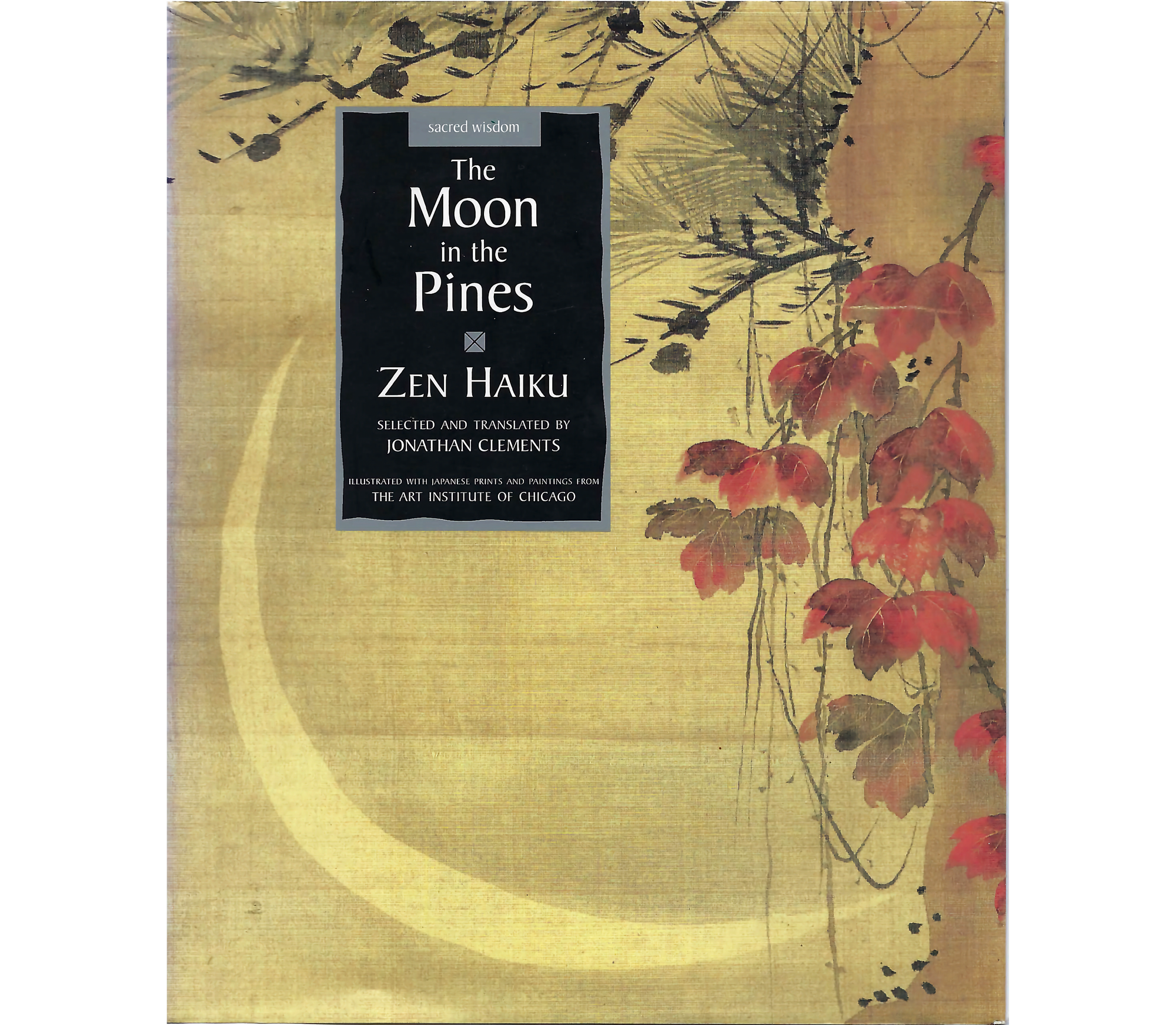
My Art Nun walks are made possible by the dedicated stewardship of Cowiche Canyon Conservancy, a non-profit land trust based in Yakima that preserves and manages more than 7,000 acres of shrub-steppe habitat. It includes a unique landscape with 40 miles of trails that wind through sagebrush, grasslands, flowering meadows, oak woodlands, and basalt cliffs that surround free-flowing Cowiche Creek.
Join me now as we explore many of these treasures.
A Walk through Cowiche Canyon
Beautiful Cowiche Creek originates in two branches from the eastern foothills of the Cascade mountains, and flows through acres of farmland before arriving in Cowiche Canyon to offer its rushing water song next to the trail.
Cowiche Creek and Buttes, April 18, 2024 (Sandra Dean)
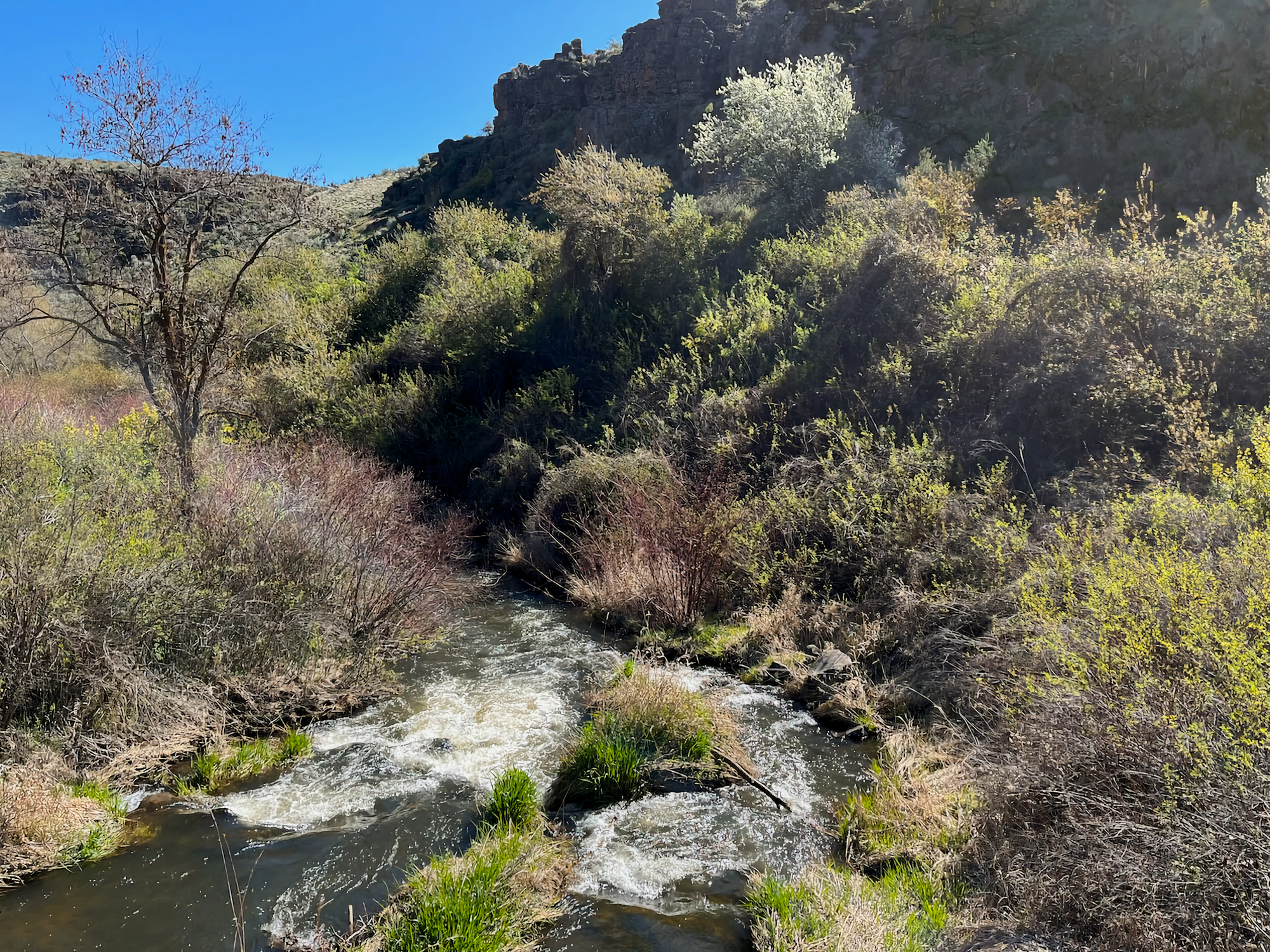
Without my journey,
And without the spring,
I would have missed this dawn.
—Shiki, 1856-1902, Japan
One early morning several years ago, I decided to get up before dawn to drive fifteen minutes to nearby Cowiche Canyon to watch the sun rise from the east behind the rhythmically sculpted hills. I brought my flashlight to navigate my way in the near darkness, a thermos of hot tea, and sat waiting at the crest of the hillside. I was not disappointed. When I returned to my drawing table later that morning, I created a visual distillation of the quietly glorious scene that had gradually unfolded before me.
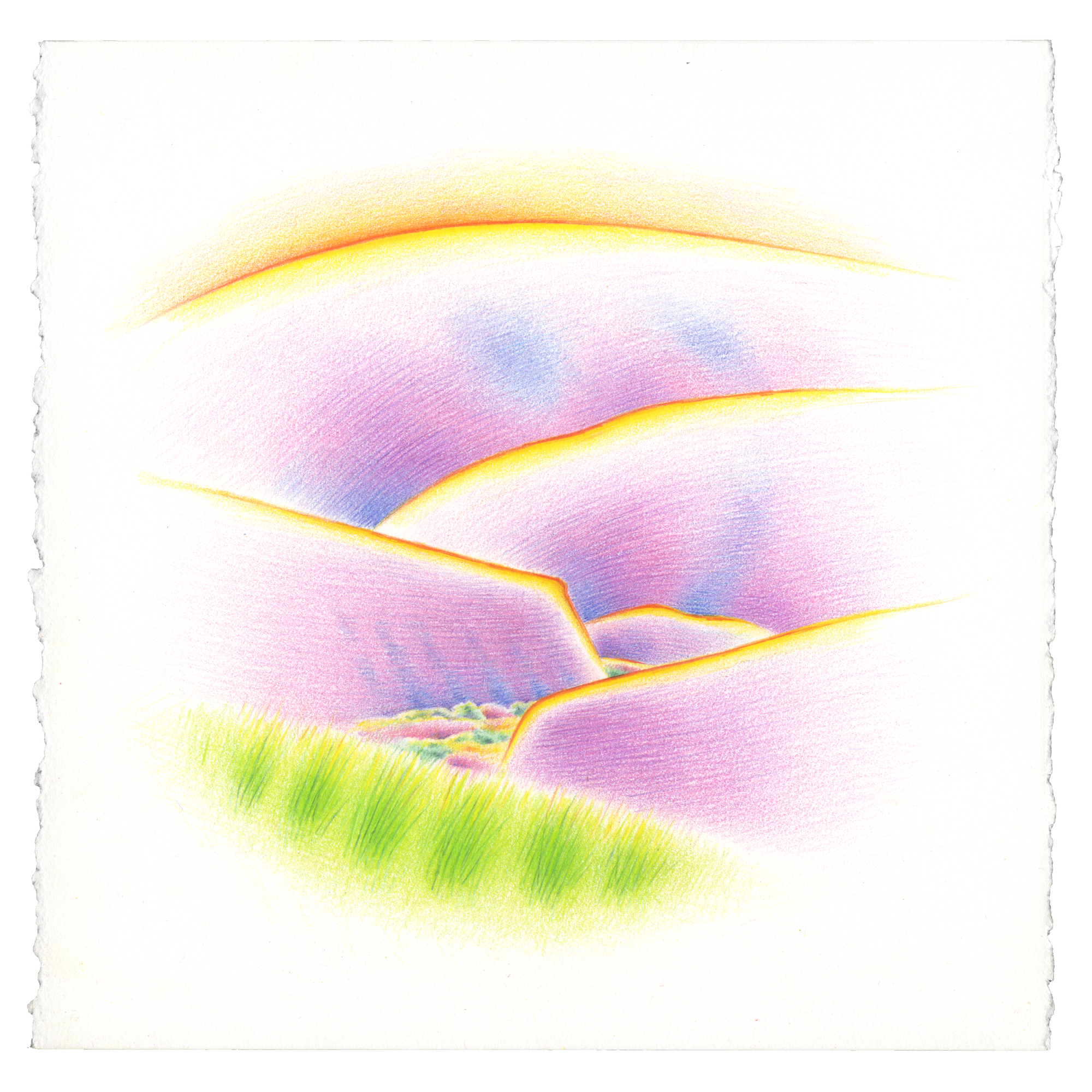
Flowers from an unknown tree
Filled me with its fragrance.
—Bashō, 17th century, Japan

The red stemmed plants that surround Cowiche Creek are red osier dogwoods. They are the main food for Lucia’s Blue, a beautiful small butterfly that is active in Cowiche Canyon for about four to six weeks, starting in early April. The butterflies arrive to mate, and the females lay their eggs on the flower buds and young leaves of the dogwood. When the emerging caterpillars are well-fed on the dogwood branches, they turn into a chrysalis, the stage in which they spend the rest of the summer and winter.
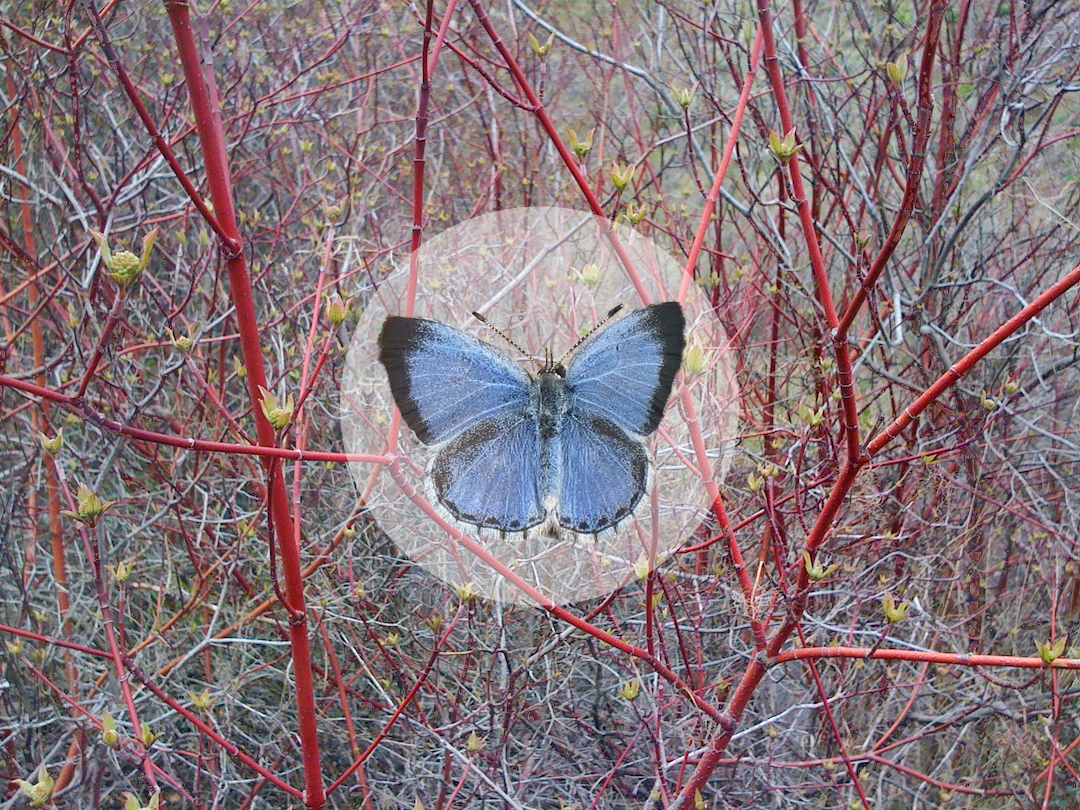
The red tones of the creekside dogwood reach their height around late April.
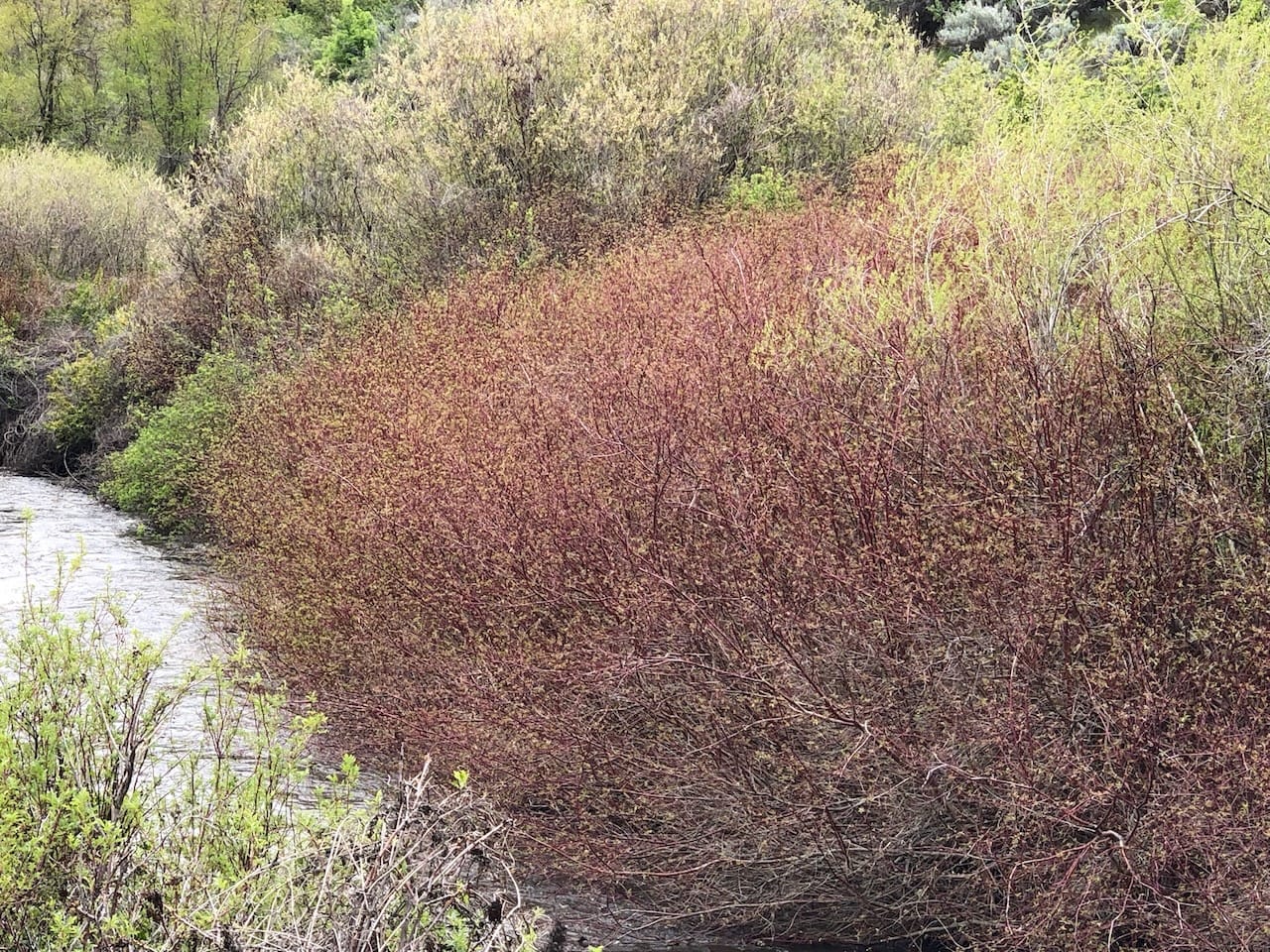
My mixed-media drawings inspired by this walk condense the main design elements of Cowiche Canyon into compact icons:
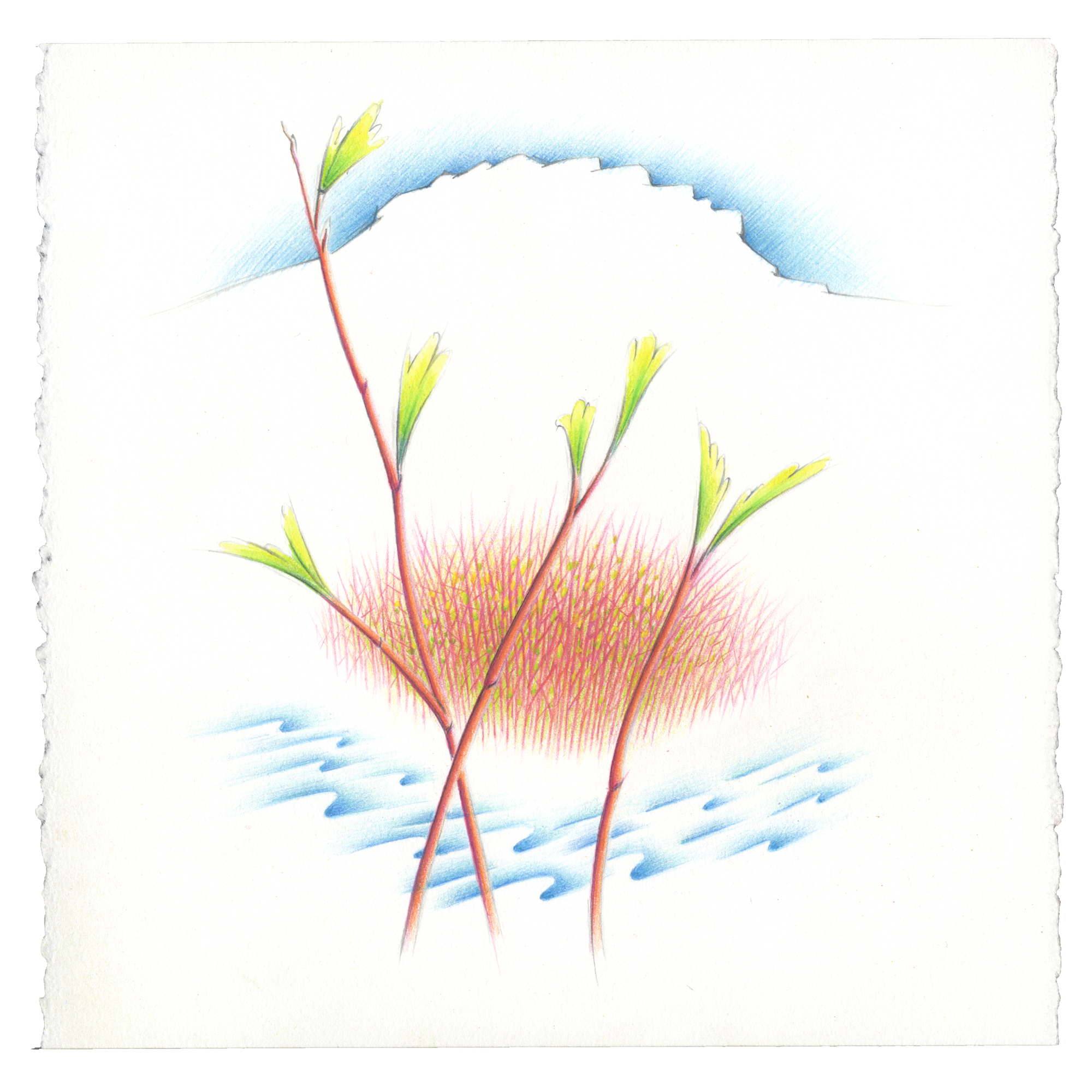
The gallery below showcases the extravagant beauty of the high season wildflower display in Cowiche Canyon.
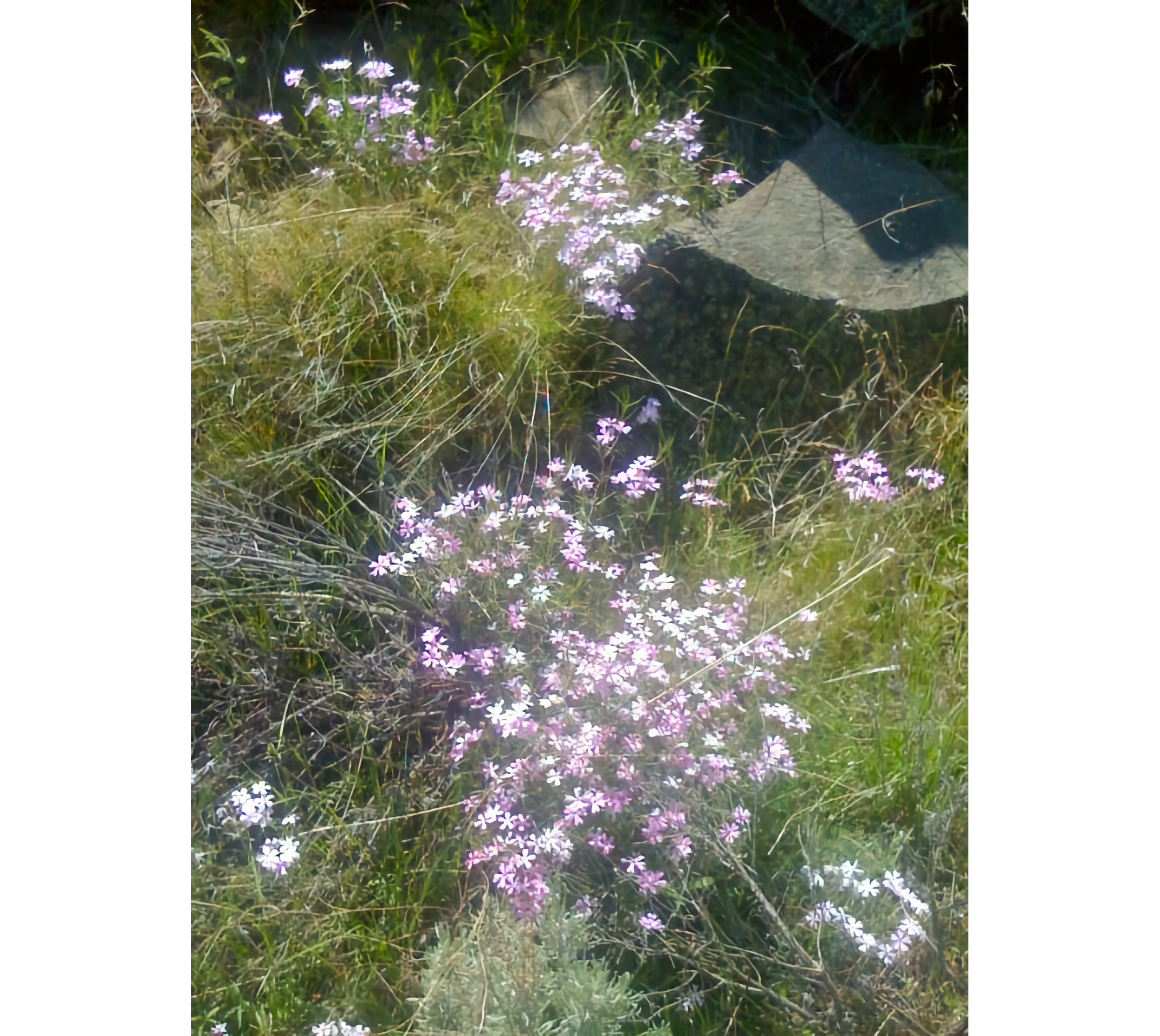
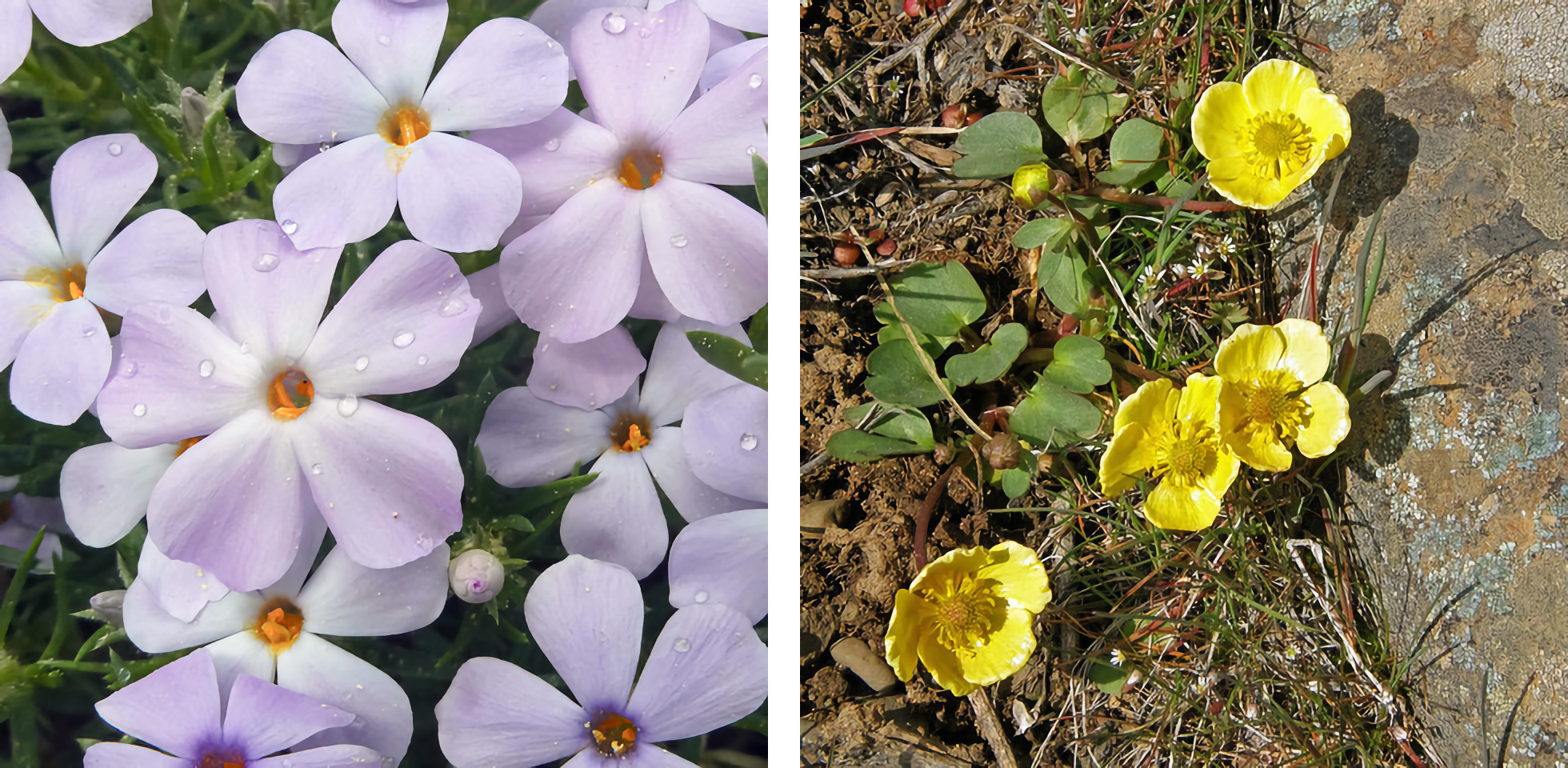
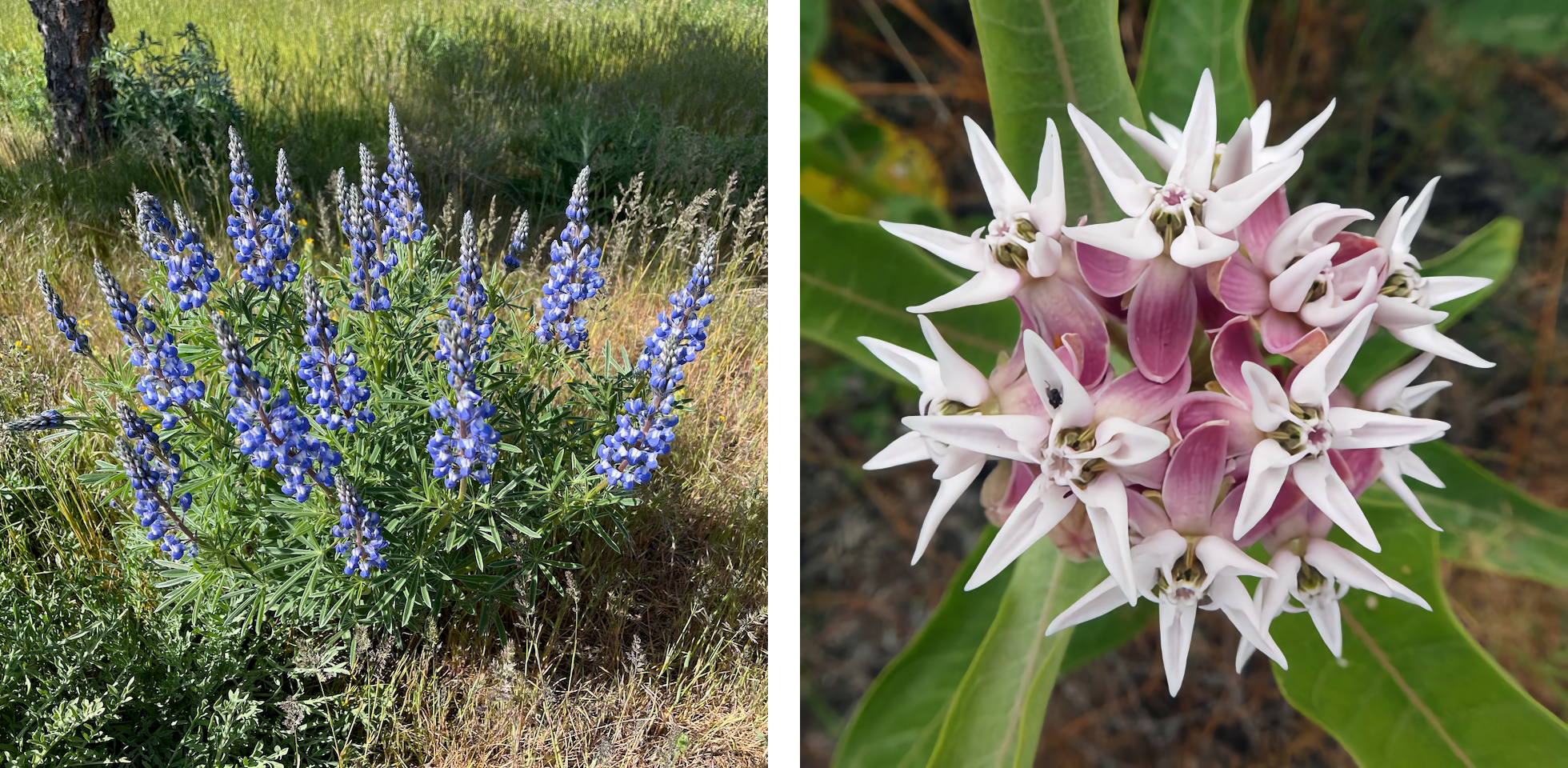
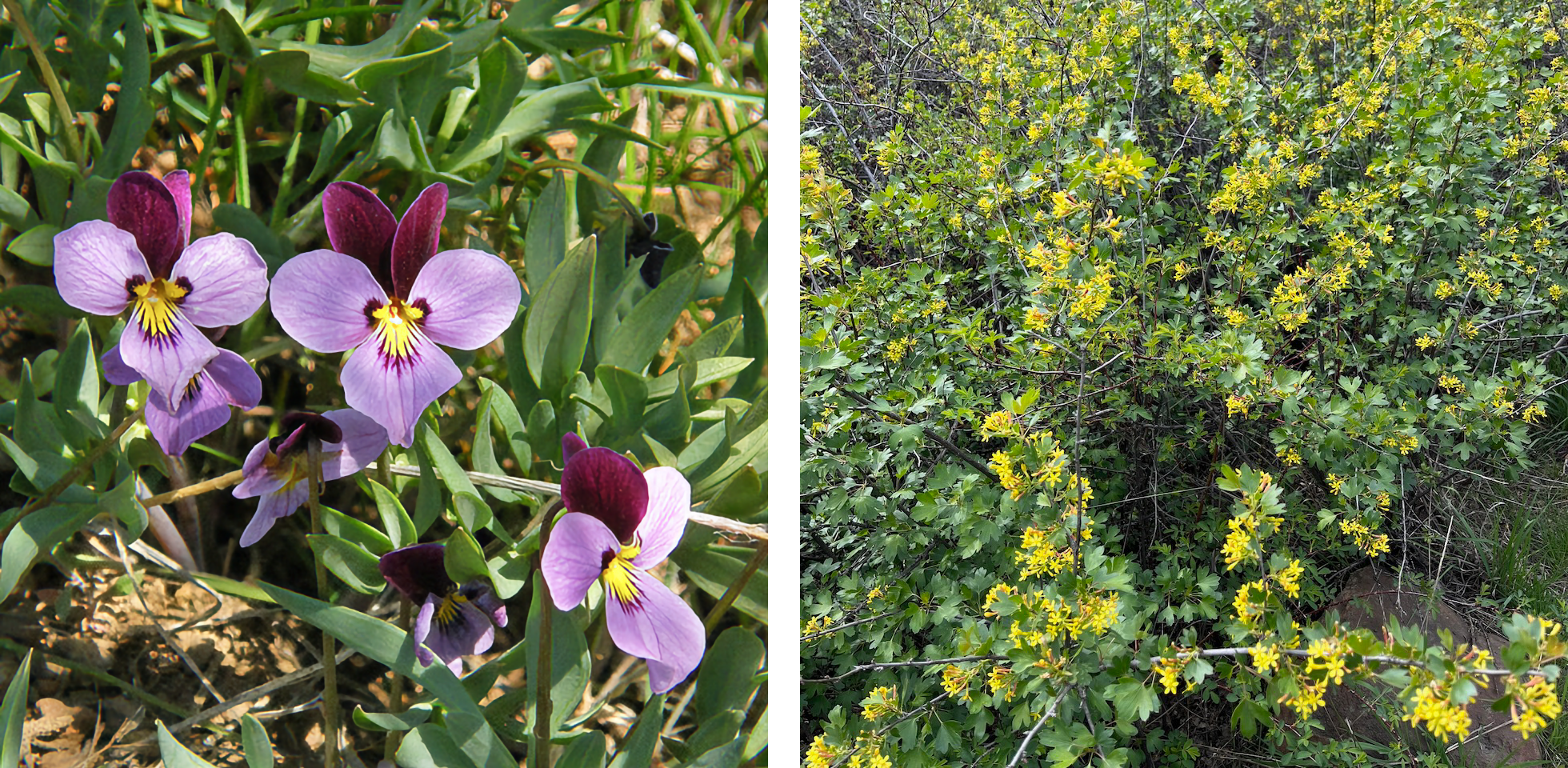
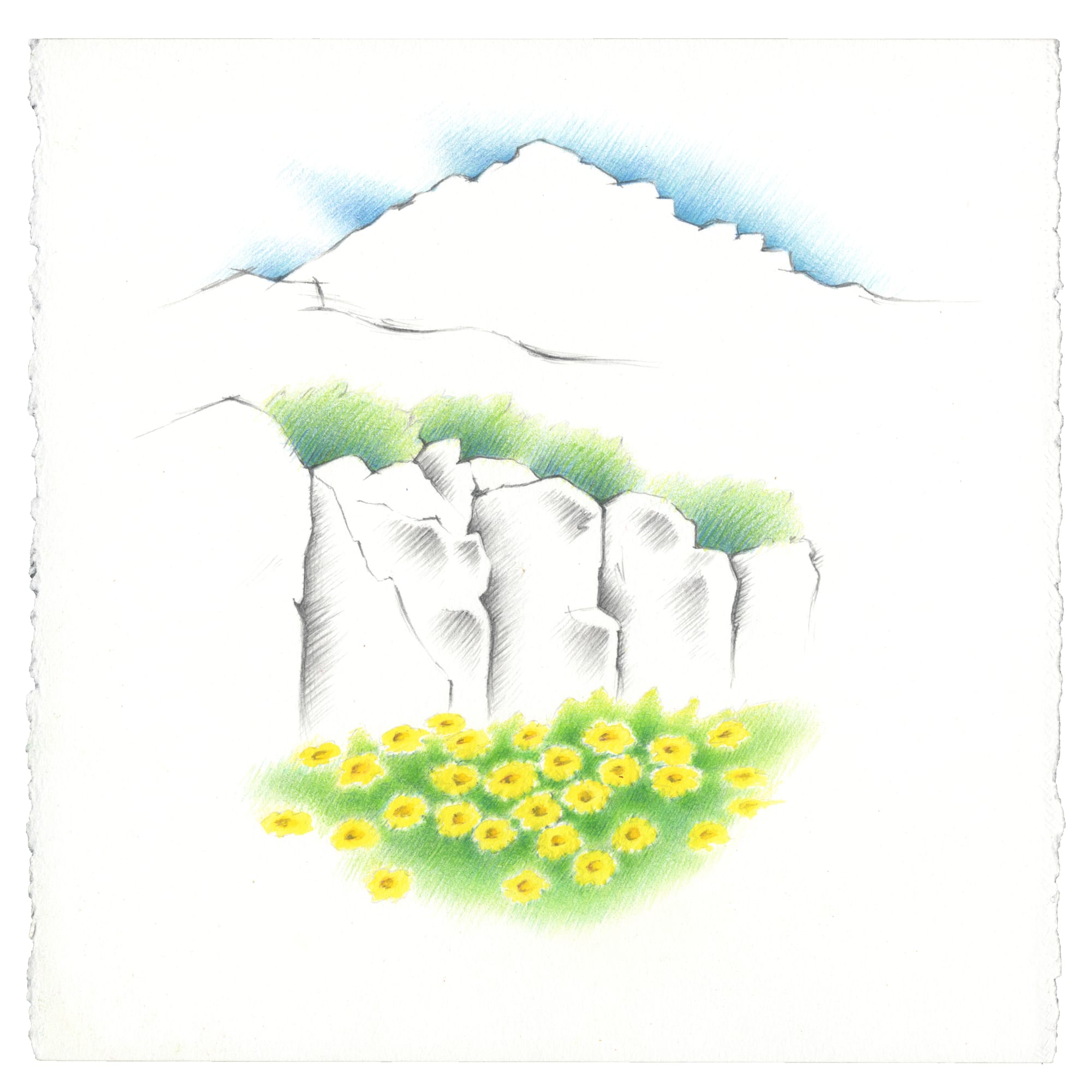
As we turn back on the trail, our walk through Cowiche Canyon nears completion. Dusk will arrive soon.
In the blue darkening sky
The moon paints a pine tree.
—Ransetsu, 17th century, Japan
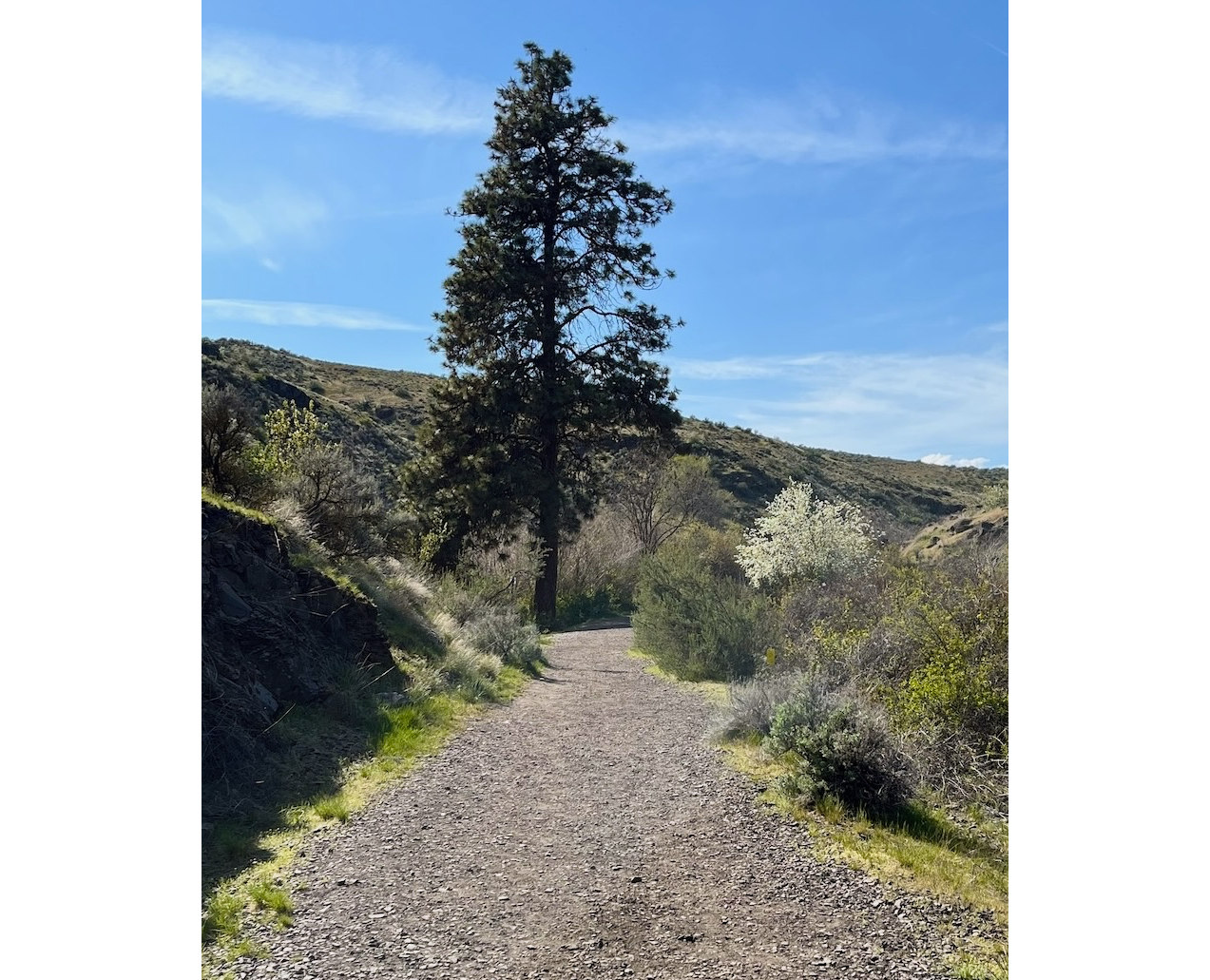
Walking along
My shadow beside me
Watching the moon.
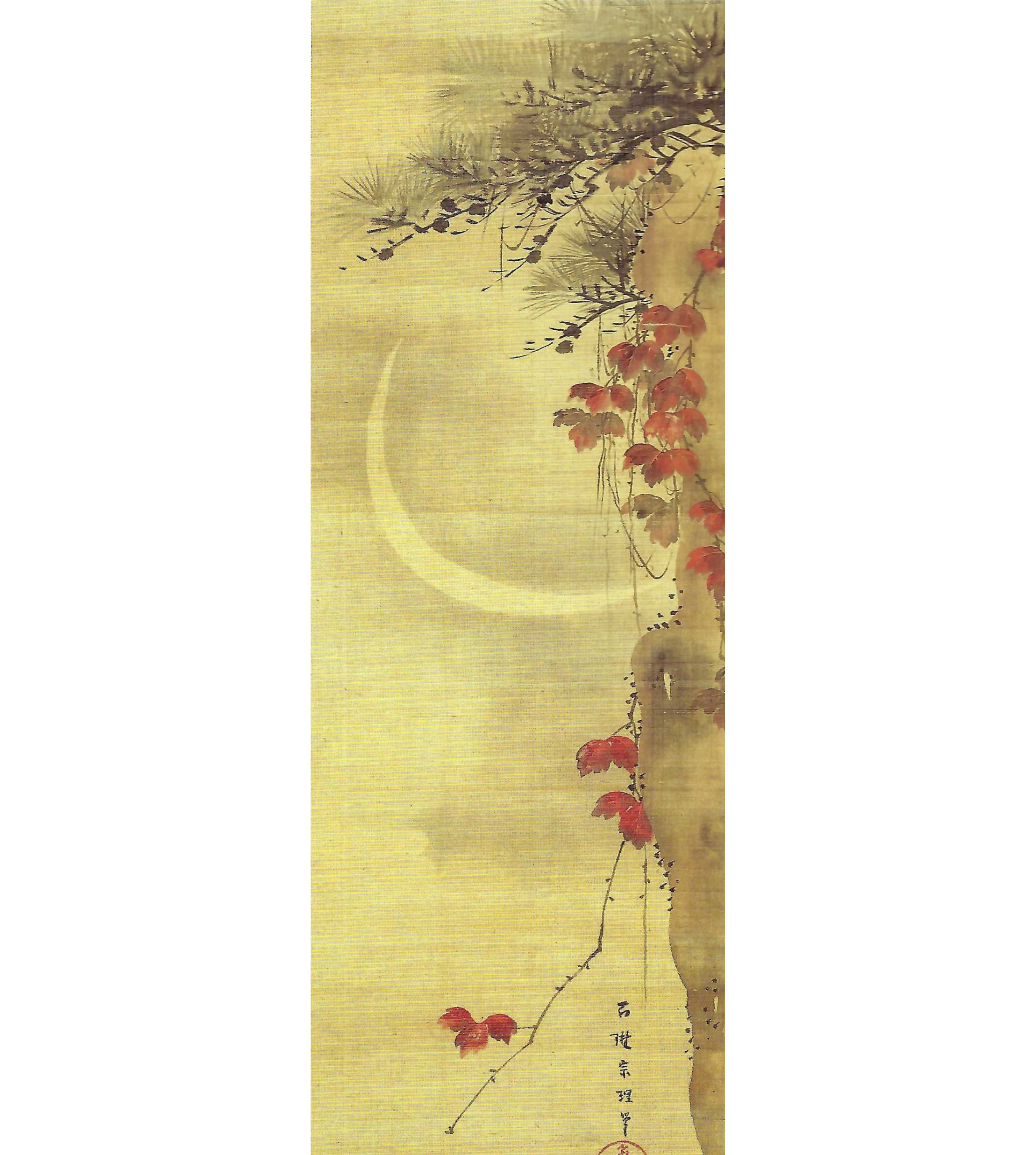
Through May showers
One night, as if in secret
The moon in the pines.



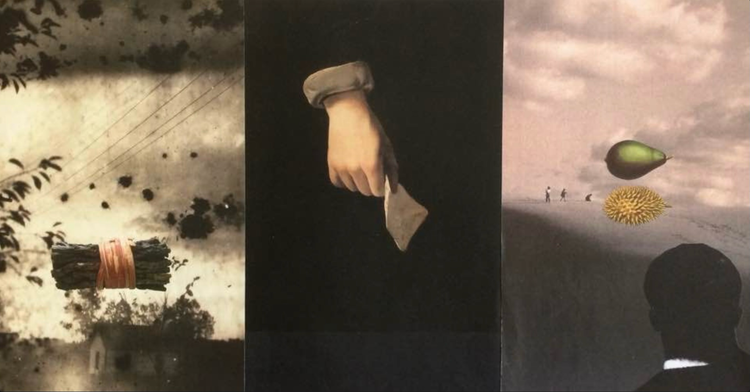
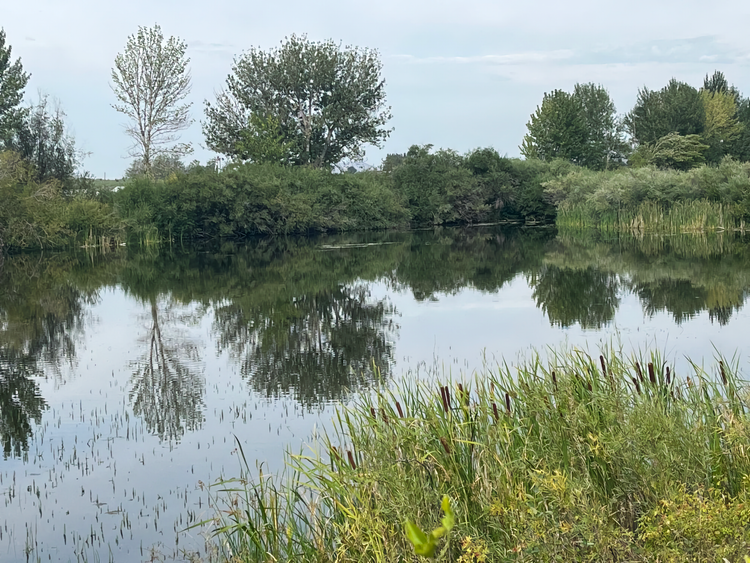

Member discussion